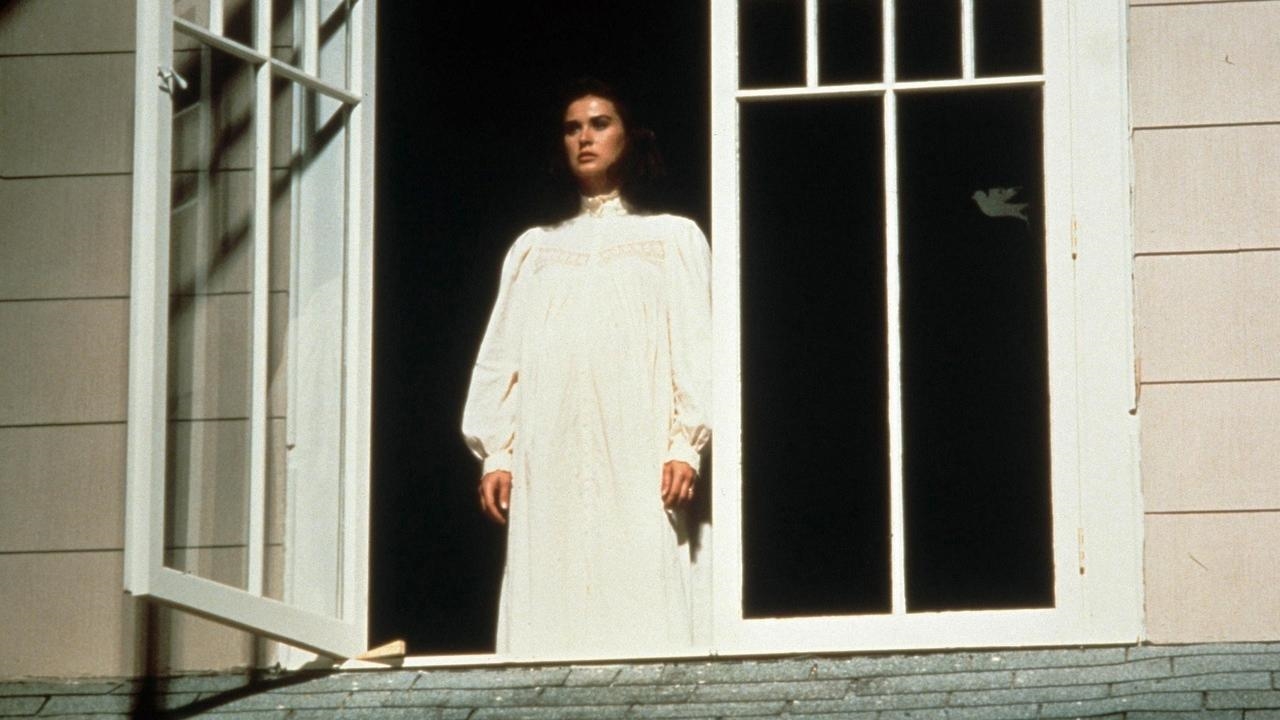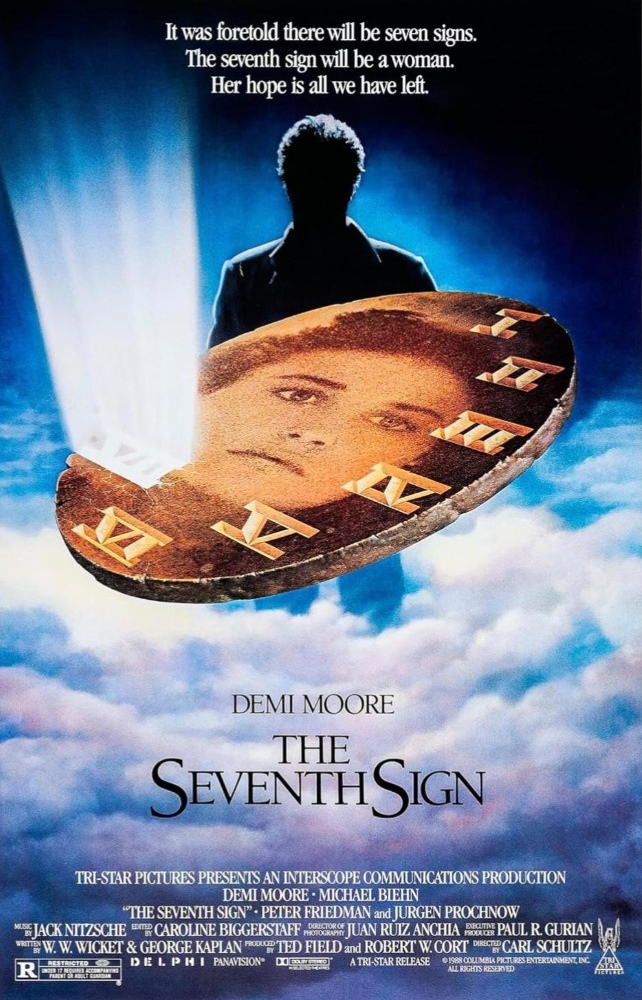Crew
Director – Carl Schultz, Screenplay – George Kaplan & W.W. Wicket, Producers – Robert W. Cort & Ted Fields, Photography – Juan Ruiz Anchia, Music – Jack Nitzche, Special Effects – Phil Cory, Makeup Effects – Craig Reardon & Kevin Yagher, Production Design – Stephen Marsh. Production Company – Interstate Communications.
Cast
Demi Moore (Abby Quinn), Michael Biehn (Russell Quinn), Jurgen Prochnow (David), Peter Friedman (Father Lucci), Manny Jacobs (Avi), John Taylor (Jimmy), Akousua Bousia (Penny), John Heard (Priest)
Plot
Abby Quinn and her lawyer husband Michael accept the mysterious David, a teacher of ancient languages, as a boarder at their home in Venice, California. The pregnant Abby is then haunted by dreams in which David appears, asking her if she is prepared to die for him. Searching David’s room, Abby finds a series of sealed scrolls. These scrolls have also been found at the scene of and are somehow tied to mysterious events around the world – tides of radioactive fish in Haiti, a snowstorm in the deserts of Israel, rivers of blood in Nicaragua. These appear to be the seven signs announcing the Biblical end of the world. Abby increasingly comes to believe that the seventh of these signs will be the birth of her own son, a child born without a soul, and that David may be trying to kill her child. She endeavours to find a way to turn back the sequence of events and stop the end of the world.
It was The Omen (1976) that created a cinematic fascination with what Charismatic Christianity calls End Times Prophecies – interpretations of the Book of Revelations concerning the Anti-Christ, The Number of the Beast, The Whore of Babylon, The End of the World and so on. The Omen did an inventive job of taking these and turning them into a luridly entertaining big-budget horror film. Its’ success was followed by a good number of cheap End Times films, although these bore little or no resemblance to what was written in the Bible, with most of them making up verses and prophecies and concentrating instead on the gory dispatches that had been the selling point of The Omen. (For a more detailed listing see Biblical End Times Prophecies).
Amidst most of this cheap and lurid Anti-Christ schlock, The Seventh Sign should be commended for its attempt to add a more literate variety of ideas to the mix instead of the usual panoply of gruesome deaths and sacrilegious obscenities. The difference may well be in the choice of Hungarian-born Carl Schultz, a director better known for serious respectable dramas like Careful, He Might Hear You (1984) and Travelling North (1987), rather than someone who approaches it from a horror perspective.
The Seventh Sign follows most of the conventions of The Omen, although what it owes its inspiration to more than anything is Rosemary’s Baby (1968) – indeed, while Rosemary’s Baby was about a woman thinking that the baby she is pregnant with could be the Devil’s son, The Seventh Sign plays it the other way around and has a woman wondering if her forthcoming child might not be the one that can save the world. Like many of these films, The Seventh Sign preys upon the anxiety of childbirth – with absurdly melodramatic effect, the film has the apocalypse occurring in conjunction with the heroine’s contractions.

The Seventh Sign tries hard and even uses existing Bible material. (Although the filmmakers must have been intensely frustrated by Ingmar Bergman appropriating the title The Seventh Seal (1957), which would have been a more apt and Biblical title that the one the film is forced to choose). Much more interesting is the film’s incorporation of the Wandering Jew legend – the legend of Cartophilus/Ahaserus, variously a temple guard, a shoemaker or a mere passer-by in Jerusalem who, according to Middle Ages folklore, struck Jesus Christ as he was being taken away to be crucified, whereupon Christ turned to him and said “Tarry thee until I come again,” cursing Cartophilus to a life of immortality to wait until The Second Coming.
The script fascinatingly ties the Wandering Jew story into End Times prophecies, although this is so obscurely couched that those who are not familiar with the legend will miss it. Moreover, this is never developed to the fullness of its intriguing potential – it makes for a great twist revelation as to who the priest is but the implications are not followed up – if the priest is Cartophilus, then that would have to make Jurgen Prochnow into Jesus Christ, for instance, but this is never made clear. This is surely doubly confusing to anyone who has never heard of The Wandering Jew legend. The end of the film also contradicts what has been established – it works emotionally, but not logically – the martyr dies, which means that Abby fails to succeed in averting that sign, yet the end of the world is somehow stopped.
Some of the film’s images are good – rivers filled with blood, the moon turned red, a recurring dream sequence set during Roman times, and the touching story of the souls in the Guf that Jurgen Prochnow narrates. Ultimately though, in eschewing the graphic shocks of The Omen in favour of a more intellectual approach to the theme, The Seventh Sign lacks bite. Eventually its only distinction is that it is probably the best photographed of this genre.
Demi Moore’s wooden but self-assured form of acting is wrong for the type of role she is cast in, while Michael Biehn’s customary intensity is under-utilised in the part as the husband. German actor Jurgen Prochnow, however, plays his part with a sad and haunting humanity.


